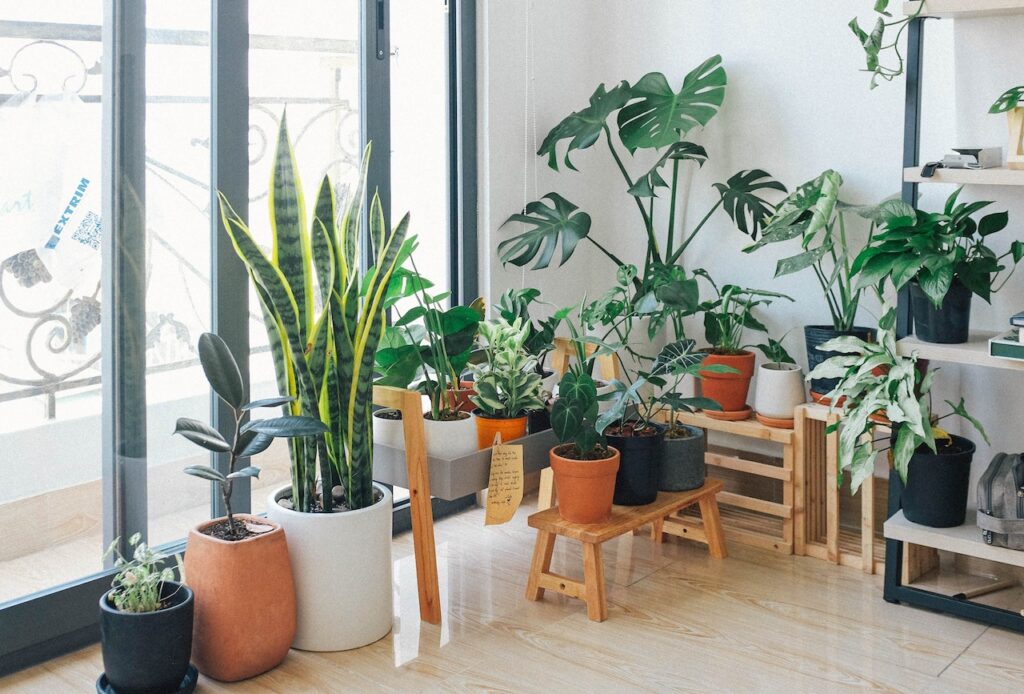
Creating a sustainable garden that not only conserves water but also promotes local biodiversity is a rewarding endeavor for any environmentally-conscious gardener. One of the keys to achieving this balance lies in selecting native plants, which are naturally adapted to your region’s climate and soil conditions, making them inherently low-maintenance. In this article, we’ll introduce you to ten native plants that are not only beautiful additions to your garden but also champions of sustainability. These plants will not only reduce your water consumption and gardening effort but also provide valuable habitat and food for local wildlife, contributing to a healthier and more resilient ecosystem in your own backyard. Whether you’re an experienced gardener or just starting out, these native plants will help you create a thriving, sustainable oasis that requires less time and resources while giving back to nature.
Lavender (Lavandula spp.):
Lavender, with its fragrant purple blossoms, is a beloved addition to any garden. Beyond its aromatic charm, it’s a hardy perennial that requires minimal maintenance once established. Lavender is drought-tolerant, making it a perfect choice for arid regions. Its nectar-rich blooms attract beneficial pollinators like bees and butterflies, contributing to a vibrant and sustainable ecosystem in your garden.
Black-Eyed Susan (Rudbeckia hirta):
Black-Eyed Susans are bright, cheerful perennials known for their sunny yellow petals and dark centers. These hardy native flowers are remarkably low-maintenance, thriving in various soil conditions and enduring drought. They provide a consistent source of nectar for bees, butterflies, and other pollinators, making them a valuable addition to a sustainable garden.
Blue Wild Indigo (Baptisia australis):
With its striking indigo-blue flower spikes, Blue Wild Indigo is not only visually appealing but also an excellent choice for a low-maintenance garden. This perennial thrives in well-drained soil and is drought-resistant once established. Its deep root system helps improve soil quality, and it provides habitat for beneficial insects.
Coneflower (Echinacea purpurea):
Coneflowers are enduring favorites in native plant gardens. Their purple-pink blooms with raised orange centers are both beautiful and functional. These hardy perennials can tolerate dry conditions and are a magnet for bees and butterflies. Coneflowers are also known for their medicinal properties, and their roots can support soil health.
Switchgrass (Panicum virgatum):
Switchgrass is a native grass that offers both aesthetic appeal and ecological benefits. It provides structure and texture to a garden while offering habitat and food for local wildlife. This drought-resistant grass requires minimal maintenance and can thrive in various soil types. Its deep root system aids in erosion control and enhances soil health, making it an eco-friendly choice for sustainable landscaping.
Milkweed (Asclepias spp.):
Milkweed is a vital addition to any garden aiming to support local wildlife, particularly monarch butterflies. Its vibrant flowers and distinct foliage provide nectar and a habitat for monarch caterpillars. This low-maintenance perennial is well-suited to a variety of soil types and can thrive even in dry conditions. By planting milkweed, you contribute to monarch butterfly conservation and create a more sustainable garden.
Eastern Red Columbine (Aquilegia canadensis):
The Eastern Red Columbine is a charming native perennial known for its unique red and yellow flowers, which resemble tiny hanging lanterns. Besides its aesthetic appeal, it attracts hummingbirds and other pollinators. This low-maintenance plant is an excellent choice for shady spots in your garden, adding a burst of color and supporting local wildlife.
Goldenrod (Solidago spp.):
Goldenrod is often unjustly blamed for seasonal allergies, but it’s actually a valuable native plant for your garden. It blooms with golden-yellow spikes of flowers, attracting bees, butterflies, and other pollinators. Goldenrod is a hardy and low-maintenance choice, thriving in various soil conditions. It’s also a late-season bloomer, providing essential late-season food for pollinators and a lovely splash of color in your garden.
Bee Balm (Monarda spp.):
Also known as wild bergamot, Bee Balm is a native plant with unique, spiky clusters of tubular flowers in vibrant shades of red, pink, or purple. This attractive perennial is a magnet for pollinators like bees and butterflies and is relatively low-maintenance. Its aromatic leaves can also be used for herbal teas, adding a functional aspect to your garden’s biodiversity.
Butterfly Weed (Asclepias tuberosa):
Butterfly Weed, a type of milkweed, is a must-have for any garden focused on supporting pollinators and wildlife. Its brilliant orange flowers serve as a crucial nectar source for butterflies, particularly monarchs. Once established, this low-maintenance perennial is drought-tolerant and thrives in well-drained soil. By planting Butterfly Weed, you help conserve monarch butterflies while adding vibrant color to your sustainable garden.